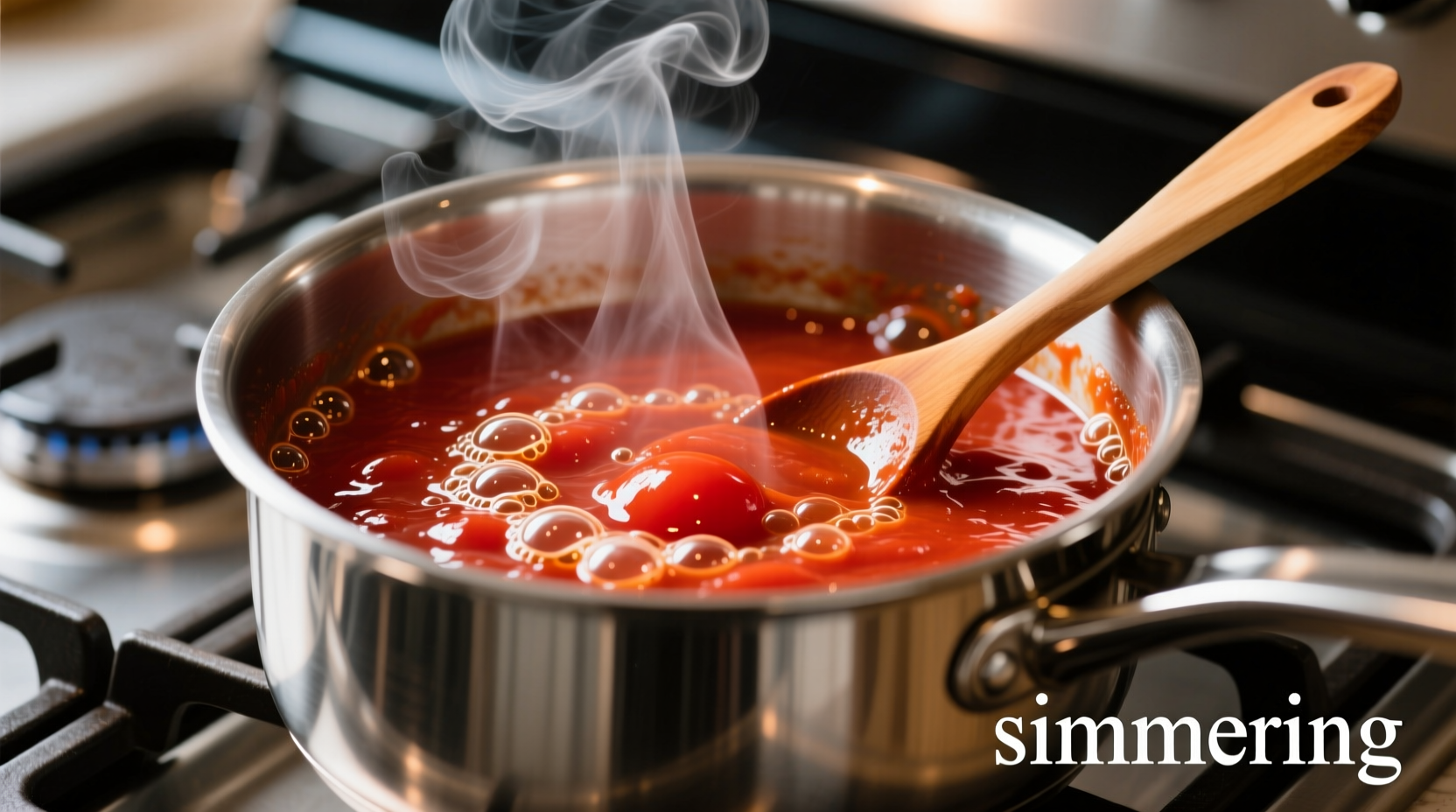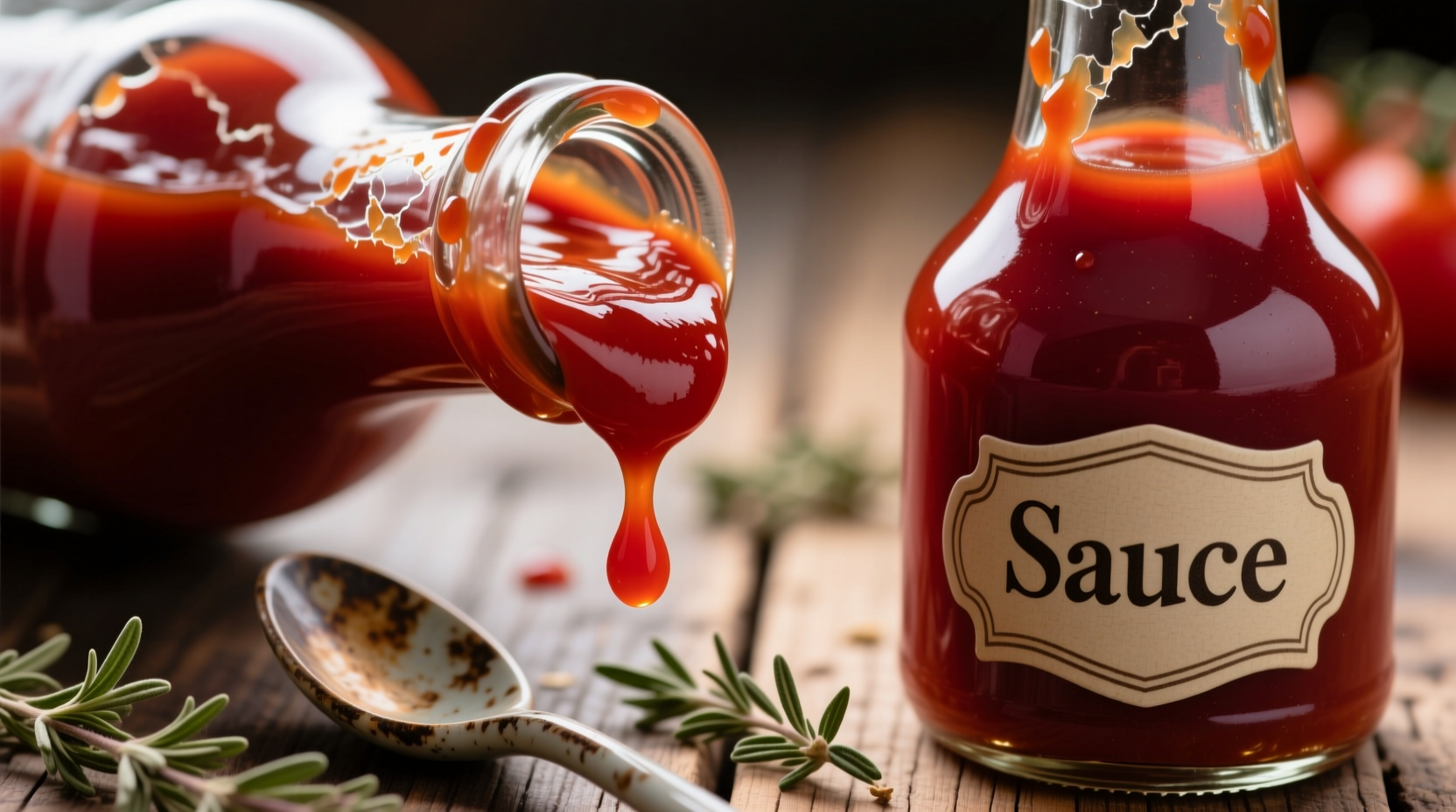Understanding the precise nature of tomato sauce prevents common kitchen mistakes and elevates your cooking. This guide cuts through the confusion surrounding tomato-based products, providing clear distinctions, optimal usage scenarios, and professional insights you can apply immediately in your cooking.
What Exactly Is Tomato Sauce?
Tomato sauce represents a specific preparation in the tomato product spectrum. Unlike raw tomatoes or unseasoned tomato puree, authentic tomato sauce undergoes cooking with aromatics and seasonings. The USDA defines commercial tomato sauce as containing 24-30% tomato solids, placing it between tomato puree (22-24%) and tomato paste (24-30% but concentrated through further reduction).
Professional chefs like those at the Culinary Institute of America emphasize that true tomato sauce contains added flavor elements. As documented in their Culinary Essentials curriculum, "tomato sauce implies a prepared product with seasoning, while tomato puree refers to unseasoned cooked tomatoes."
| Tomato Product | Tomato Solids | Texture | Seasoning | Primary Use |
|---|---|---|---|---|
| Tomato Sauce | 24-30% | Smooth, pourable | Herbs, garlic, onions | Pasta dishes, pizza base |
| Tomato Puree | 22-24% | Thinner, liquid | Unseasoned | Soups, stews, further reduction |
| Tomato Paste | 24-30% (concentrated) | Thick, dense | Unseasoned | Flavor base, color enhancement |
| Crushed Tomatoes | Varies | Chunky | Minimal | Hearty sauces, braises |
Historical Development of Tomato Sauce
The journey of tomato sauce from New World curiosity to kitchen staple spans centuries. According to food historians at the Smithsonian National Museum of American History, tomatoes arrived in Europe in the 16th century but weren't widely accepted as food until the 18th century due to initial beliefs they were poisonous.
Key milestones in tomato sauce evolution:
- 1796: First published tomato sauce recipe appears in American Cookery by Amelia Simmons
- 1820s: Italian chefs begin incorporating tomatoes into pasta dishes
- 1870s: First commercial tomato sauce production begins in the United States
- 1930s: Standardized USDA regulations establish definitions for tomato products
- 1980s: "New American" cuisine movement elevates tomato sauce preparation techniques

When to Use Tomato Sauce: Practical Applications
Understanding context boundaries prevents recipe failures. Tomato sauce works best in specific scenarios while other tomato products serve better in different applications.
Ideal Uses for Tomato Sauce
- Pasta dishes: Provides perfect consistency for coating noodles without requiring additional reduction
- Pizza bases: Spreads easily and cooks properly during pizza preparation
- Casseroles: Maintains structure without making dishes watery
- Quick soups: Adds immediate flavor without extended cooking time
When to Choose Alternatives
- For thick sauces: Use tomato paste diluted with water or stock
- For fresh tomato flavor: Opt for tomato puree you can season yourself
- For chunky textures: Select crushed tomatoes instead
- For intense tomato flavor: Reduce tomato sauce yourself rather than starting with paste
Quality Indicators for Tomato Sauce
The Food and Drug Administration's guidelines for tomato products specify minimum standards, but premium options exceed these requirements. Look for these quality markers:
- Ingredient simplicity: High-quality sauce lists only tomatoes, olive oil, onions, garlic, herbs, and salt
- No added sugar: Authentic tomato sauce relies on natural tomato sweetness
- Brix level: 8-12° Brix indicates proper tomato concentration
- Acidity level: Between 3.5-4.0 pH for proper preservation and flavor balance
- Color consistency: Rich, deep red without orange or brown undertones
Common Tomato Sauce Mistakes to Avoid
Even experienced cooks make these errors that compromise dish quality:
- Using as a direct substitute for paste: Creates watery dishes that require unnecessary reduction time
- Adding dairy too early: Causes curdling when added to hot tomato sauce
- Overcooking after adding: Degrades flavor compounds and creates bitter notes
- Ignoring seasoning needs: Many commercial sauces under-season for versatility
- Storing improperly: Transferring to glass containers extends shelf life significantly
Storage Guidelines for Maximum Freshness
Proper storage maintains quality and prevents waste. According to research from the National Center for Home Food Preservation, opened tomato sauce maintains best quality for 5-7 days refrigerated in airtight containers. For extended storage:
- Transfer from can to glass or BPA-free plastic container
- Leave 1-inch headspace if freezing
- Freeze in portion-sized containers for recipe convenience
- Label with date - frozen sauce maintains quality for 6 months
- Thaw overnight in refrigerator rather than using microwave











 浙公网安备
33010002000092号
浙公网安备
33010002000092号 浙B2-20120091-4
浙B2-20120091-4